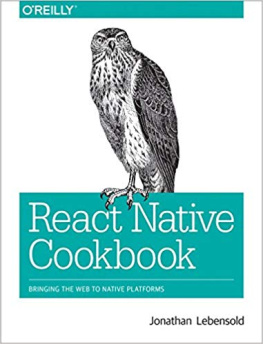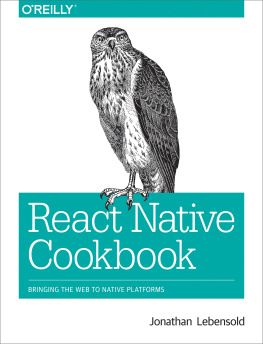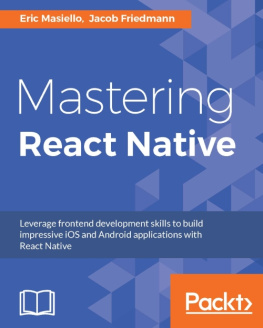Mateusz Grzesiukiewicz [Mateusz Grzesiukiewicz] - Hands-On Design Patterns with React Native
Here you can read online Mateusz Grzesiukiewicz [Mateusz Grzesiukiewicz] - Hands-On Design Patterns with React Native full text of the book (entire story) in english for free. Download pdf and epub, get meaning, cover and reviews about this ebook. year: 2018, publisher: Packt Publishing, genre: Computer. Description of the work, (preface) as well as reviews are available. Best literature library LitArk.com created for fans of good reading and offers a wide selection of genres:
Romance novel
Science fiction
Adventure
Detective
Science
History
Home and family
Prose
Art
Politics
Computer
Non-fiction
Religion
Business
Children
Humor
Choose a favorite category and find really read worthwhile books. Enjoy immersion in the world of imagination, feel the emotions of the characters or learn something new for yourself, make an fascinating discovery.
- Book:Hands-On Design Patterns with React Native
- Author:
- Publisher:Packt Publishing
- Genre:
- Year:2018
- Rating:5 / 5
- Favourites:Add to favourites
- Your mark:
Hands-On Design Patterns with React Native: summary, description and annotation
We offer to read an annotation, description, summary or preface (depends on what the author of the book "Hands-On Design Patterns with React Native" wrote himself). If you haven't found the necessary information about the book — write in the comments, we will try to find it.
Learn how to write cross platform React Native code by using effective design patterns in the JavaScript world. Get to know industry standard patterns as well as situational patterns. Decouple your application with these set of Idea patterns.
Key Features- Mobile development in React Native should be done in a reusable way.
- Learn how to build scalable applications using JavaScript patterns that are battle tested.
- Try effective techniques on your own using over 80 standalone examples.
React Native helps developers reuse code across different mobile platforms like iOS and Android.
This book will show you effective design patterns in the React Native world and will make you ready for professional development in big teams.
The book will focus only on the patterns that are relevant to JavaScript, ECMAScript, React and React Native. However, you can successfully transfer a lot of the skills and techniques to other languages. I call them Idea patterns.
This book will start with the most standard development patterns in React like component building patterns, styling patterns in React Native and then extend these patterns to your mobile application using real world practical examples. Each chapter comes with full, separate source code of applications that you can build and run on your phone.
The book is also diving into architectural patterns. Especially how to adapt MVC to React environment. You will learn Flux architecture and how Redux is implementing it. Each approach will be presented with its pros and cons. You will learn how to work with external data sources using libraries like Redux thunk and Redux Saga.
The end goal is the ability to recognize the best solution for a given problem for your next mobile application.
What you will learn- Explore the design Patterns in React Native
- Learn the best practices for React Native development
- Explore common React patterns that are highly used within React Native development
- Learn to decouple components and use dependency injection in your applications
- Explore the best ways of fetching data from the backend systems
- Learn the styling patterns and how to implement custom mobile designs
- Explore the best ways to organize your application code in big codebases
The ideal target audience for this book are people eager to learn React Native design patterns who already know the basics of JavaScript. We can assume that the target audience already knows how to write Hello World in JavaScript and know what are the functions, recursive functions, JavaScript types and loops.
Downloading the example code for this book You can download the example code files for all Packt books you have purchased from your account at http://www.PacktPub.com. If you purchased this book elsewhere, you can visit http://www.PacktPub.com/support and register to have the files e-mailed directly to you.
Mateusz Grzesiukiewicz [Mateusz Grzesiukiewicz]: author's other books
Who wrote Hands-On Design Patterns with React Native? Find out the surname, the name of the author of the book and a list of all author's works by series.

![Mateusz Grzesiukiewicz [Mateusz Grzesiukiewicz] Hands-On Design Patterns with React Native](/uploads/posts/book/119470/thumbs/mateusz-grzesiukiewicz-mateusz-grzesiukiewicz.jpg)
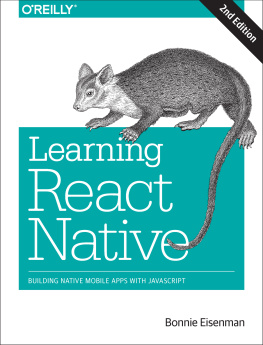

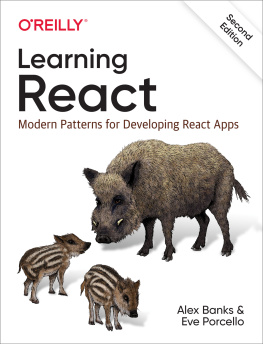
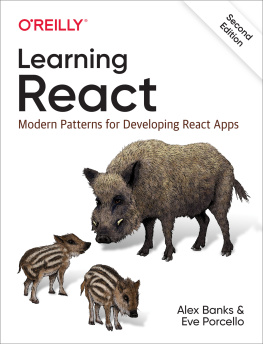
![Adam Boduch [Adam Boduch] - React and React Native - Second Edition](/uploads/posts/book/119457/thumbs/adam-boduch-adam-boduch-react-and-react-native.jpg)
![Emilio Rodriguez Martinez [Emilio Rodriguez Martinez] - React: Cross-Platform Application Development with React Native](/uploads/posts/book/119453/thumbs/emilio-rodriguez-martinez-emilio-rodriguez.jpg)
